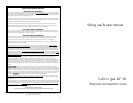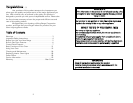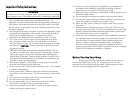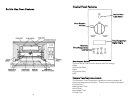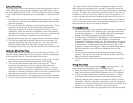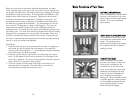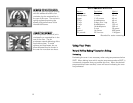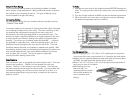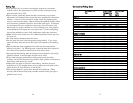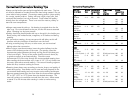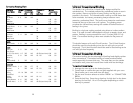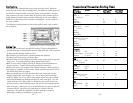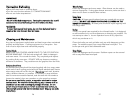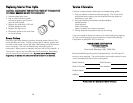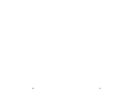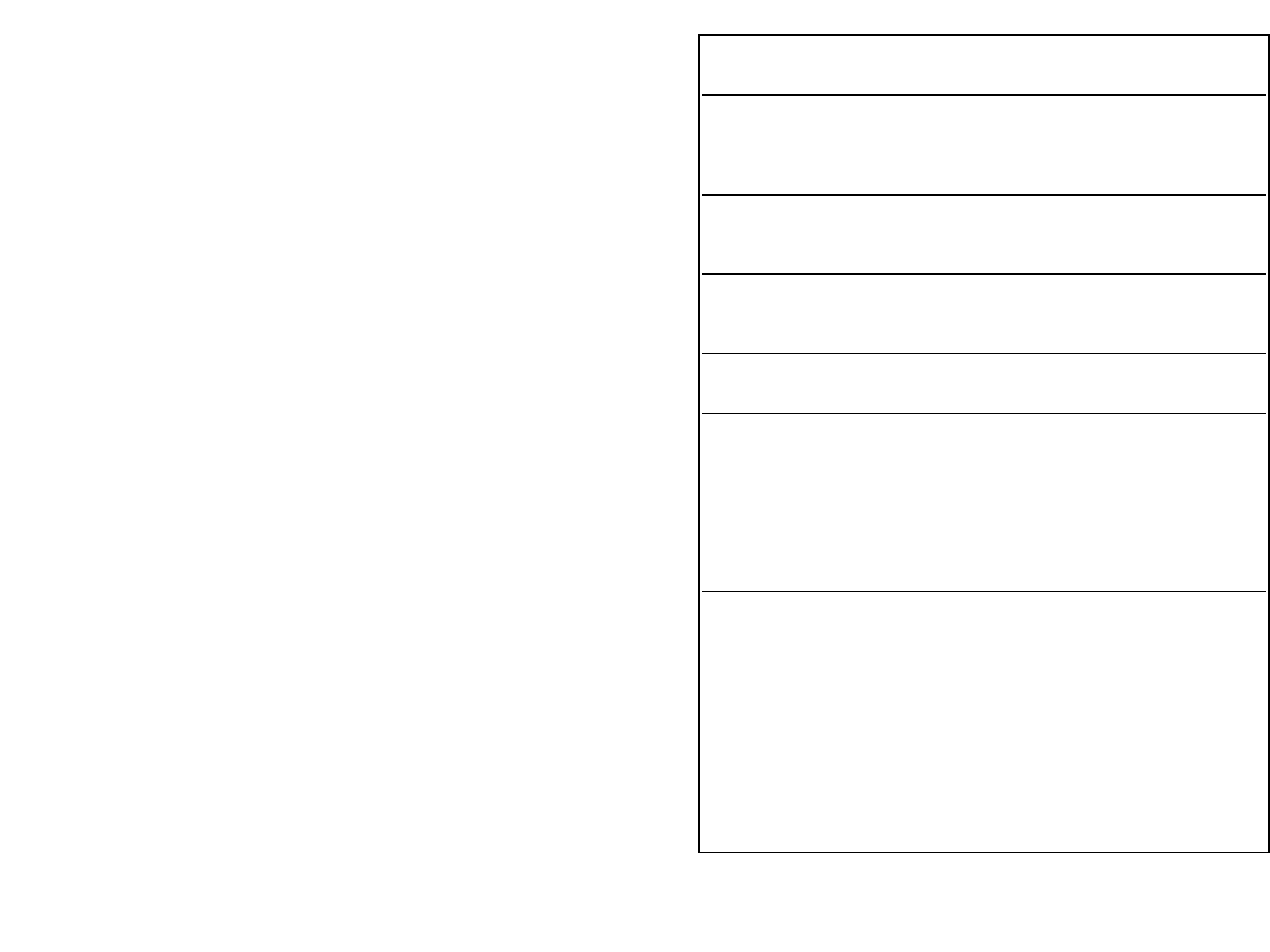
21
CCoonnvveennttiioonnaall RRooaassttiinngg CChhaarrtt
TTyyppee aanndd WWeeiigghhtt CCoonnvveennttiioonnaall CCoonnvveennttiioonnaall IInntteerrnnaall
CCuutt ooff MMeeaatt ((llbbss)) TTeemmppeerraattuurree TTiimmee TTeemmppeerraattuurree
((
oo
FF)) ((
oo
CC)) ((mmiinn..//llbb..)) ((
oo
FF)) ((
oo
CC))
BBEEEEFF
Rib Roast 4 -6 325 163
•Rare 25 140 60
•Medium 30 155 68
•Well Done 40 170 77
Rump Roast 4 - 6 325 163
•Medium 25 155 68
•Well Done 30 170 77
Tip Roast 3 - 4 325 163
•Medium 35 155 68
•Well Done 40 170 77
LLAAMMBB
Leg of Lamb 3 - 5 325 163 30 180 82
PPOORRKK
Pork Loin 3 - 5 325 163 35 180 82
Pork Chops
1” (2.5 cm) thick 1 - 1.5 350 177 55-60 (total time) 180 82
Shoulder 5 - 8 325 163 30 - 35 180 82
(Bone-in)
Ham,
(fully cooked) 5 325 163 18 140 60
PPOOUULLTTRRYY
Chicken, whole 3 - 4 375 191 30 180 82
Chicken, 4 350 177 20 - 25 180 82
quarters
Turkey, 12 - 16 325 163 16 - 20 180 82
unstuffed
Turkey, 12 - 16 325 163 18 - 24 180 82
stuffed
Turkey Breasts 4 - 6 350 177 25 180 82
Cornish Hens 1 - 2 350 177 55-60 (total time) 180 82
20
CCoonnvveennttiioonnaall//CCoonnvveeccttiioonn RRooaassttiinngg TTiippss
Always use the broiler pan and grid supplied with each oven. The hot
air must be allowed to circulate around the item being roasted. Do not
cover what is being roasted. Convection roasting seals in juices quickly
for a moist, tender product. Poultry will have a light, crispy skin, and
meats will be browned, not dry or burned. Cook meats and poultry
directly from the refrigerator. There is no need for meat or poultry to
stand at room temperature.
•Always roast meats fat side up. No basting is required when the fat
side is up. Do not add water to the pan, as this will cause a steamed
effect. Roasting is a dry-heat process.
•Poultry should be placed breast side up on the grid in the broiler pan.
Brush poultry with melted butter, margarine, or oil before and during
roasting.
•For convection roasting, do not use pans with tall sides, as this will
interfere with the circulation of heated air over the food.
•If using a cooking bag, foil tent, or other cover, use conventional
baking rather than convection.
•When using a meat thermometer, insert the probe halfway into the
center of the thickest portion of the meat. (For poultry, insert the
thermometer probe between the body and leg into the thickest part
of the inner thigh.) The tip of the probe should not touch bone, fat,
or gristle to ensure an accurate reading. Check the meat
thermometer 2/3 of the way through the recommended roasting time.
After reading the thermometer once, insert it 1/2” (1.3 cm) further into
the meat, then take a second reading. If the second reading registers
below the first, continue cooking the meat.
•Roasting times always vary according to the size, shape, and quality of
meats and poultry. Less tender cuts of meat are best prepared in the
conventional bake setting and may require moist cooking techniques.
Remove roasted meats from the oven when the thermometer registers
5
O
F to 10
o
F (-15
o
C to -12
o
C) lower than the desired doneness. The
meat will continue to cook after removal from the oven. Allow roasts
to stand 15 to 20 minutes after roasting in order to make carving
easier.



